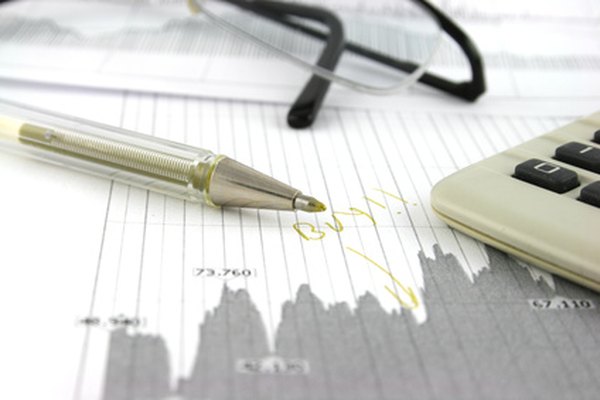What Does Volume Mean When Trading Stocks?
Volume provides an indication of investor interest in a stock.
stocks and shares image by Andrew Brown from Fotolia.com
The term volume means how much of a given stock was traded in a particular period of time. Higher volume stocks are those where there's more investor interest in buying and selling them, which sometimes results from a news event. A stock's current volume compared to its historical volume allows investors to spot changes or make comparisons to the performance of other stocks. Volume also confirms price trends and gives a heads-up about potential reversals. When investor sentiment begins to lean into a particular stock, its volume has concrete implications for its liquidity.
Tip
When trading stocks, higher volume for a specific security results in higher liquidity.
Measuring Trading Volume
Stock trading volume refers to the amount of shares traded in a particular stock over a period of time. Often volume is measured in terms of shares traded per day. Remember that the number of shares bought and sold, rather than the number of transactions, is what counts, so 10 transactions involving 100 shares generates the same volume as 100 transactions involving 10 shares each.
Volume numbers for particular stocks are available from many stock market information sites, including those run by brokers. Some exchanges, including NASDAQ, offer lists of unusually high volume stocks, indicating something is potentially going on with those companies that investors may want to be aware of. Stock market investors will often watch changing volume numbers along with changing prices when deciding to make trades.
Volume and Liquidity
In general, assets with higher trading volume, whether they're stocks or something else, are also considered more liquid. If you want to sell a stock or anything else, then the higher the volume, the more people are actively trading it and the more likely you are to find a buyer at the price you want.
Volume in the market overall changes over time. Volume is typically low around Christmas and New Year's Day, when investors and traders take vacations and there's little corporate news announced to shift the markets.
What Volume Shows
If there's a higher volume of trading in a particular stock, that naturally means that investors are interested in buying or selling it. If volume and price are on the rise, it means investors are betting the company will do well. If volume is up but price is down, it means more investors are looking to sell.
Some traders will even look at price points in a stock's recent trading history where volume is particularly high. Those points can indicate prices where large institutional investors see a good value or have the desire to sell, which can be useful information for other investors deciding when to make their own trades.
Investors sometimes also give more significance to rises and falls in price when they overlap with higher volume, since that means a higher percentage of the people who own the stock were involved in those trades.
References
Resources
Writer Bio
Steven Melendez is an independent journalist with a background in technology and business. He has written for a variety of business publications including Fast Company, the Wall Street Journal, Innovation Leader and Ad Age. He was awarded the Knight Foundation scholarship to Northwestern University's Medill School of Journalism.

